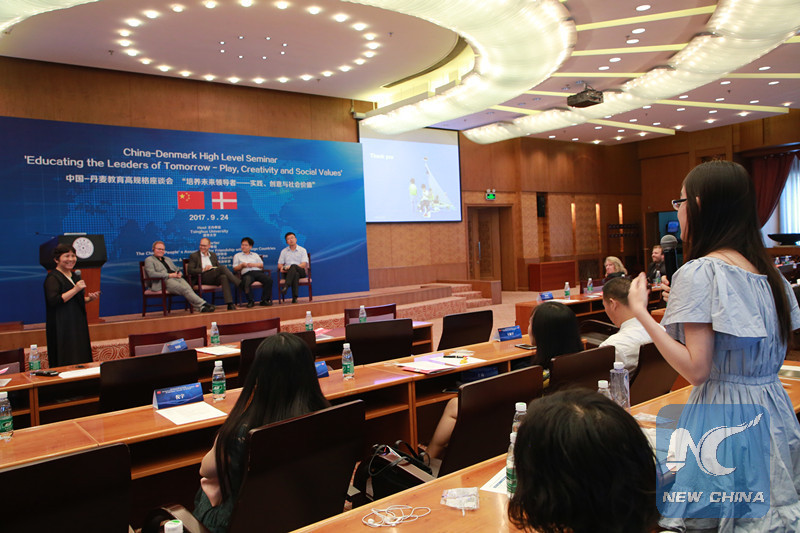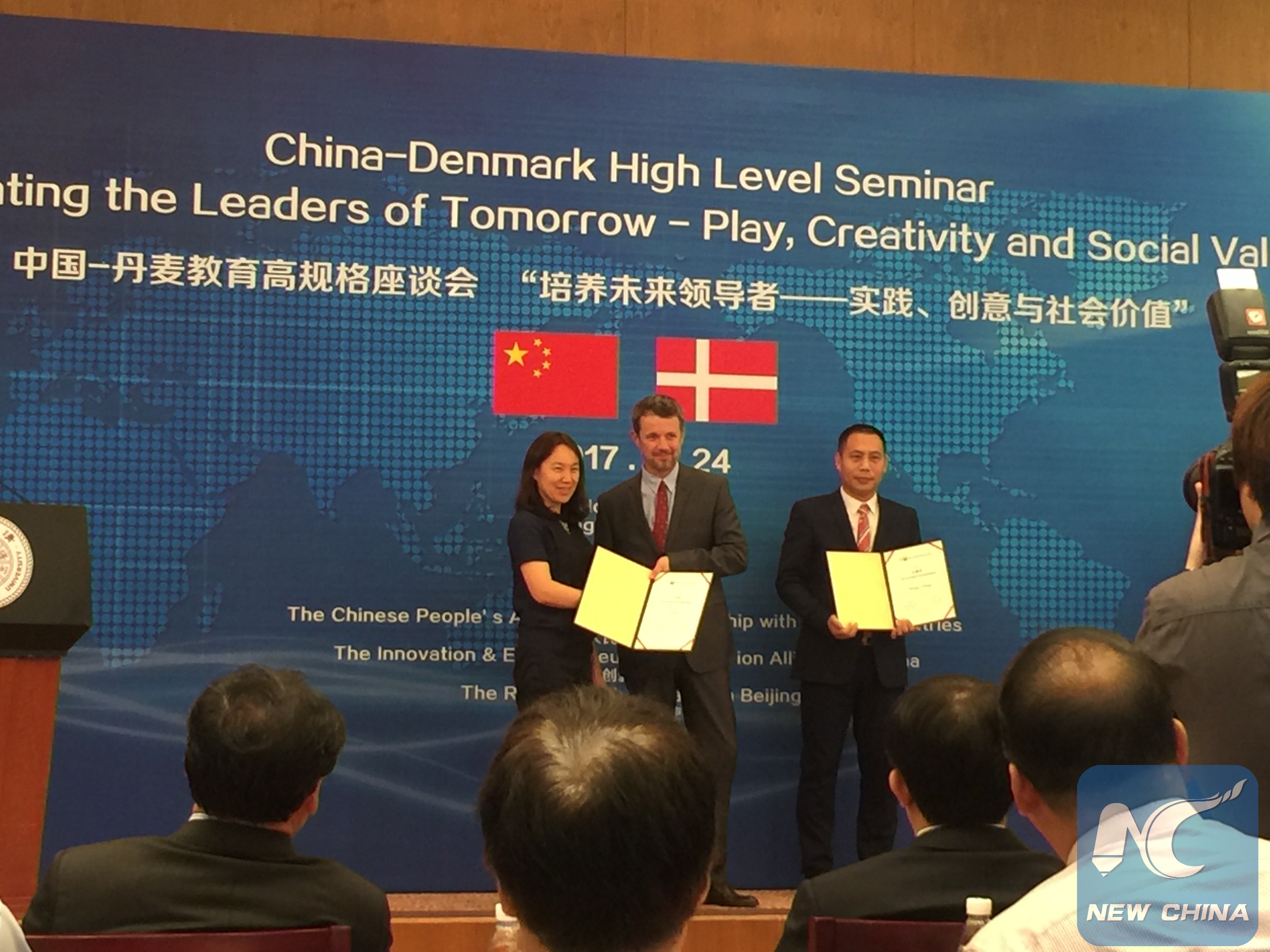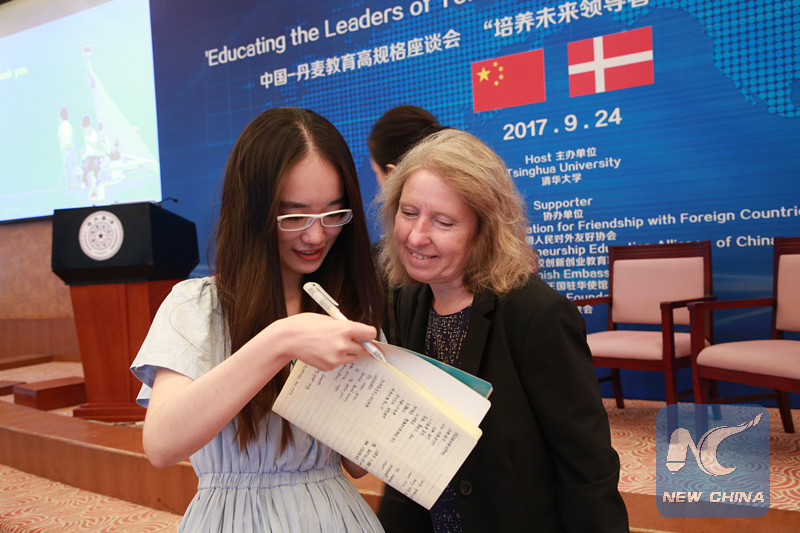
By Ru Ge
How do two countries which (on the surface) are so different in terms of society and culture, find common ground? How can they exchange ideas and values in a constructive way? These are exactly the questions posed at a high-level seminar between China and Denmark entitled "Play, Creativity and Social Values," which took place at Tsinghua University on September 24, 2017.
It was attended by world-renowned scholars, high-ranking officials and successful entrepreneurs from both countries. On the recommendation of my tutor, Prof. Zhang Xihua, I attended the seminar on behalf of the Center of Denmark Studies at Beijing International Studies University.
I was given the opportunity because I had just finished a half-year-program as an exchange student in Copenhagen University, and have published a dozen articles on life in Denmark in international news outlets.
I was thrilled to see Crown Prince Frederik at the seminar, where he launched the TULLL Fellowship together with Prof. Yang Bin, Vice President and Provost of Tsinghua University, and John Goodwin, CEO of the LEGO Foundation. He also granted scholarships to academically gifted students.

Crown Prince Frederik grants scholarships to academically gifted students.
In addition to this, I was also very honored to listen to a presentation by Prof. Christian Byrge from University of Aalborg, a specialist in creativity research. In his opinion, the ability to be creative can be cultivated by deliberate practice. To demonstrate his opinion, he showed three pictures to the audience. In the first picture, a car is covered by a few pieces of cardboard, and it is impossible to see through the windows what is inside. In the second picture, a woman is cutting onions on a cutting board in a subway car and the passengers close to her look very offended and cover their nose. In the third picture, an iron box with the word "life jackets" on the front is kept closed by a huge lock.

Prof. Christian Byrge speaks in documentary "Students in Denmark vs China: who are more innovative.
"These three pictures don't make sense at the first glance but if we consider them carefully there are some reasonable justifications for the pictures," Byrge said. He asked us to use the shortest possible time to come up with as many explanations of each picture as we could.
According to Byrge, this sort of exercise is really helpful to improve the flexibility of the mind and improve creativity. I really connected with this mindset, because in my understanding, if one often tries to think out of the box and contrives new ideas, one will gradually become more flexible and creative.
So when faced with various challenging situations, one will definitively react more quickly and calmly with constructive solutions from different angles. So one should not be pessimistic about one's lack of creativity or innovation, because all of these can be acquired by deliberate practice and hard work.
Prof. Byrge's presentation was very enlightening and inspiring, and I learned a lot from his speech. He also gave us more faith in innovation and development here in China by showing us a bar chart that depicts the rapid improvement of Chinese industry's creativity.
Following Prof. Byrge's presentation was the speech of Bo Stjerne Thomsen, the head of the LEGO Foundation. He asked us to take out a few pieces of small LEGO bricks which were sealed in a plastic bag assigned to each audience member before the seminar started. Then he gave us 40 seconds to assemble these pieces and make a toy duck. I was surprised to see that after 40 seconds, the LEGO duck each person made was very different from others' versions, although the same six pieces of bricks were given as raw materials. The different ducks that were made illustrated a crucial point. Given the same raw materials and the same amount of time, different people will still come up with a different end product.

Different people come up with a different version.
After the seminar ended, I spoke to Anette Aarestrup, an official with the Danish Embassy in Beijing.
She says that collaboration between China and Denmark is not only crucial, but also provides an opportunity for the peoples of each country to learn from each other.

The author interviews Anette Aarestrup.
"I think it's extremely important that we strengthen collaboration within education and research. Take me as an example. I came here when I was 23 years old studying Chinese. China has always been part of me, through all these years. So not only for academic achievement but also for forming personality and understanding between our respective cultures, it is extremely important to have these exchanges. Of course we can learn from each other. Today the topic has been how to introduce more creativity. There are surely a lot of things that we can develop together," Aarestrup said.
Aarestrup asked me if I would go back to Denmark. I said that I would, to seek a job after I graduate.
In that shared moment, the real potential of China-Denmark exchanges was made clear to both of us. There are undeniable cultural differences, but by sharing our experiences and learning from each other, we can bridge those divides and bring our peoples closer together.


